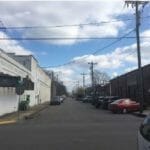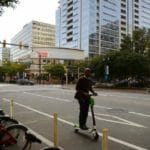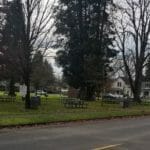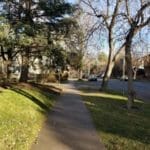Top Story
Co-authored by Rodolfo L. Rodríguez
The ULI Health Leaders Network is empowering real estate and land use professionals with the skills, knowledge, and networks to improve health outcomes in their professional practice and communities. The 26 Health Leaders who were selected for Cohort 2, which runs from October 2018 to May 2019, is undertaking a series of activities, including in-person gatherings, learning-focused webinars with leaders in the health and built-environment field, small group work, and individual assignments.
With so many of today’s communities having evolved to prioritize the automobile, getting an on-the-ground perspective of the challenges facing pedestrians and bicyclists may not be at the forefront for decision makers and shapers of the built environment. ULI Health Leaders Cohort 2 was tasked to walk around their home or office and perform a “walking audit”, noting what they observed in terms of how the environment supported—or did not support—healthy behaviors, safety, and equitable development patterns.
Below is a sample of these rich observations from 2019 Cohort 2 ULI Health Leaders. To read excerpts from Cohort 1, visit Pedestrian Perspective: What Can You Learn by Taking a Walk Around Your Neighborhood?
 Sara Cox, Tennessee Department of Health, Nashville, TN
Sara Cox, Tennessee Department of Health, Nashville, TN
Sara highlighted unintended social disparities in her Nashville neighborhood, even after healthy community strategies are implemented in infrastructure improvement projects.
 Ellen Donovan, Ramboll, San Francisco, CA
Ellen Donovan, Ramboll, San Francisco, CA
Ellen provided a rich historical context of her neighborhood in San Francisco, and shed light on existing issues related to homelessness, safety, social equity, and food access.
 Lida Lewis, Wingate Hughes Architects, Washington, DC
Lida Lewis, Wingate Hughes Architects, Washington, DC
Lida examined her neighborhood in northern Virginia, outside of Washington, DC, at the micro and macro scale using the WELL building standard.
 Melony Pederson, University of Washington Tacoma, Tacoma, WA
Melony Pederson, University of Washington Tacoma, Tacoma, WA
Melony tackled layers of complexity in her Tacoma-area neighborhood associated with walkability, among them the prioritization of the vehicle over a pedestrian, and discussed cultural shifts required to get people out the car and on the sidewalk.
 Elle Rich, University of Colorado Denver, Denver, CO
Elle Rich, University of Colorado Denver, Denver, CO
Elle provided a comprehensive snapshot of Denver’s historic Capitol Hill neighborhood, and offered a lens of existing health opportunities and challenges.